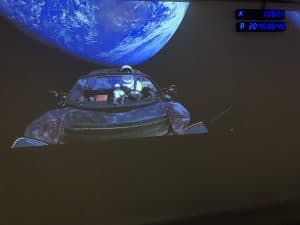
Is Hans Christian Andersen’s Little Match Girl — left out while others prosper — a parable of the US in the midst of a worldwide Renaissance in trade deals?
Steve Forbes, editor of Forbes magazine and a Republican candidate for President in 1996, writes that “Two big things threaten the improving US economy: a weak dollar and trade protectionism.” Regarding the latter, he continues,
It’s one thing to update trade agreements such as Nafta, quite another to blow them up or try to dictate specific outcomes, such as forcing companies to move their facilities back to the U.S.
Ditto trade abuses, such as China’s unfairly restricting access to its markets for foreign companies or forcing businesses to part with their proprietary technology, not to mention its outright theft of trade secrets via hacking.
But the thrust of trade negotiations should be reducing barriers, not erecting them via import taxes or anti-import regulations.
The rest of the world is moving ahead. Japan has concluded a great trade deal with the EU. The 11 nations that were part of the Pacific trade deal the U.S. scuttled last year are constructing a new one, leaving out the U.S. Thirty-five new bilateral and regional trade pacts are being negotiated, which will mean more trade between the countries involved. Increasingly, the U.S. is on the outside looking in.
That image of being on the outside looking in recalls Hans Christian Andersen’s famous story, The Little Match Girl.
And there’s a new addition to the trade deals noted above. Trade correspondent L.C. writes in her latest report that
The African Union (AU) at its January 30th meeting announced that it will hold “an Extraordinary Summit” in Kigali, Rwanda on January 21st “to sign the Agreement Establishing the African Continental Free Trade Area” (CFTA). If implemented, the CFTA will bring into a single bloc the East African Community (EAC), Common Market for Eastern & Southern Africa (COMESA), and Southern African Development Community (SADC). Negotiations had not been easy, so the announcement is significant.
L.C.’s report takes note of President Trump’s downplaying of trade in his State of the Union address, contrary to expectation:
The skimpy discussion of trade in his SOTU was a climb-down from remarks the year previous that focused on trade with varying degrees of aggressiveness and with more detail. It is not clear what this means, though it might suggest that the tug-of-war among advisers with different views on trade is continuing – and delaying major decisions on new trade actions.
Washington Post columnist George Will criticizes the administration’s recent protectionist measures against steel and washing machine imports — as harming the US more than helping it. And Harley-Davidson is unhappy with US withdrawal from the Trans-Pacific Partnership (TPP), which will hurt its Asian export prospects.
FISA-FBI scandal
Hugh Hewitt, who used to vet requests for FISA surveillance, is appalled at the FBI’s manipulation of the FISA court by leaving out the Clinton-Democratic Party provenance of the dossier used to justify the request. Forbes provides a time line of how this was done.
A writer for the City Journal argues that there is a second scandal:
Mainstream journalism’s reaction to the memo has so diverged from its past practices—and indeed from the media’s usual narrative about its own heroic role in our republic—that it constitutes a sort of meta-scandal within the scandal that in some ways is more dispiriting than the FISA scandal itself.
As though to underline the City Journal‘s charge, one FBI official is going straight from a partisan FBI officialdom to an equally partisan CNN, where he promises to defend the FBI officials he’s leaving. A poster for his FBI departure party boasts of his new occupation..
Angelo Codevilla, another government veteran like Hewitt, argues that the FISA court shouldn’t even exist — that its function was better performed pre-FISA by the President and his staff. The present arrangment is made-to-order for partisan corruption.
Former federal attorney Andrew McCarthy explains why House Democrat “Jerry Nadler’s Leaked Rebuttal of the Nunes Memo Is Very Weak.”
(hat tip: Eaglebeak)
SpaceX Falcon Heavy launch reignites popular enthusiasm for space travel

Tesla in earth orbit over Australia
Huge cheering crowds watched from Florida beaches and over the Internet as Elon Musk’s SpaceX launched its huge Falcon Heavy test rocket — the largest in the world since the Saturn rocket that took astronauts to the moon. The first two booster rockets landed perfectly side by side back at the Cape Canaveral Space Center. The third piece, the “core,” didn’t make it to its seaborne landing platform. Otherwise, the test seems to have been a great success and certainly a public relations coup, as one of Elon Musk’s Tesla cars sailed into orbit between Earth and Mars.
The rocket reportedly cost one-tenth the cost of a rocket that NASA is building. NASA’s planned moon landing has not been universally well-received.
Click here to go to the previous Founders Broadsheet (“Trump approval +10%; nuke, navy, ABM growth urgent”)

Leave a Reply